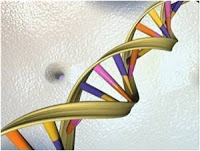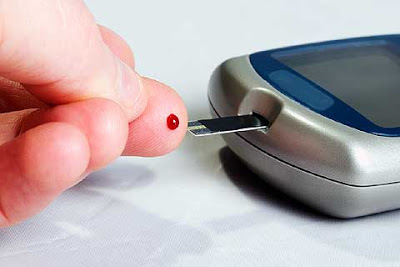In a world where the epidemic of diabetes threatens to spiral out of control, our understanding of the influences that put people at risk of developing the disease is crucial. As a second part to my recent blog about the important genetic influence on the development of obesity, it is also very important to consider the genetic contribution towards diabetes.
In North America, approximately 80% of diabetes is caused by Type 2 Diabetes, which is a condition of elevated blood sugars caused by resistance of the body’s organs and tissues to the effects of insulin, to the point where the pancreas is not able to produce sufficient insulin to overcome this state of insulin resistance. Insulin resistance and Type 2 Diabetes worsen with weight gain and improve with weight loss; however, there are a subset of people with Type 2 Diabetes who are normal weight. About 10% of diabetes is Type 1 diabetes, where the immune system attacks the pancreas and causes it to fail to produce insulin. The final 10% of diabetes is causes by various rare genetic disorders.
The evidence for a strong genetic tendency towards developing Type 2 Diabetes is strong. For example:
- some ethnic groups residing in North America (such as Hispanic, South Asian, and Aboriginal) are at 2-6 fold higher risk of developing Type 2 Diabetes compared to North American Caucasians
- a twin of a person with Type 2 Diabetes is at 90% risk of developing the disease (as compared to Type 1 diabetes, where the risk is lower at 50%)
- nearly 40% of patients with Type 2 Diabetes have at least one affected parent (whereas in Type 1 Diabetes, the risk of the child of a Type 1 Diabetic parent getting the disease is only 6%)
- the lifetime risk of a person getting Type 2 Diabetes is 5-10 times higher if they have a first degree relative with the disease, compared to not having a relative with the disease
As reviewed by Dr McCarthy, the search for genes connected to Type 2 Diabetes has really taken off with the ability to search the entire human genetic makeup (called the ‘genome’) in recent years. In fact, there are at least 40 genetic spots (called ‘loci’) in the human genome that have been found to be associated with a susceptibility to developing Type 2 Diabetes. These genetic variants are associated with a variety of disturbances that affect the risk of developing Type 2, including alterations in the development of the pancreas, insulin synthesis, and insulin secretion. The genes that contribute to development of obesity (as blogged previously) likely contribute to the risk of type 2 diabetes as well, as the insulin resistance that characterizes type 2 diabetes worsens with weight gain.
In terms of the influence of these genetic variants on the risk of Type 2 Diabetes, it appears that in some cases, having two abnormal copies of these genes may as much as double the risk of getting diabetes, compared to having two normal copies of these genes.
For some individuals, the eventual development of Type 2 Diabetes may be unavoidable, due to their genetic makeup. However, many cases of Type 2 Diabetes are preventable, as many people develop sufficient insulin resistance to generate full blown diabetes only when they reach a state of overweight or obesity. While obesity in itself has some genetic predisposition as well, both obesity and type 2 diabetes can be improved with dedicate attention towards a healthy lifestyle.
As for obesity genetics, our understanding of the genetic basis for Type 2 Diabetes is essential, as it will help us in better understanding the disease, finding new targets for treatment, and hopefully allowing us to improve individual strategies towards treatment and prevention.
Dr Sue Pedersen www.drsue.ca © 2011 drsuetalks@gmail.com
Follow me on Twitter for daily tips! @drsuepedersen
Follow me on Facebook: drsue.ca












